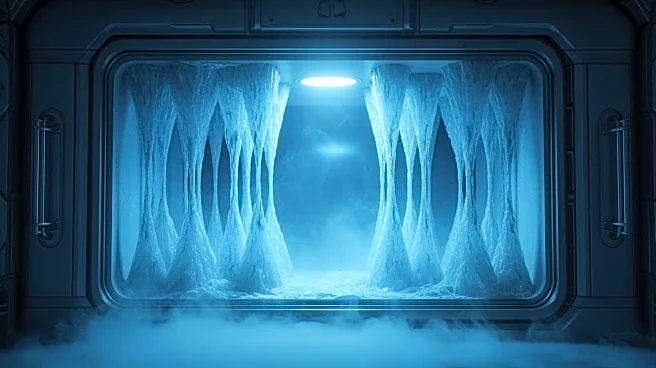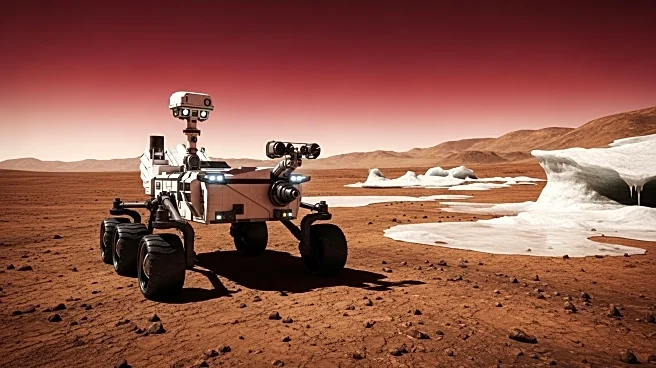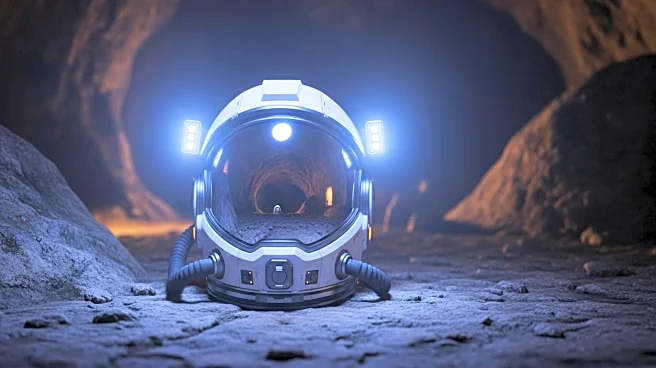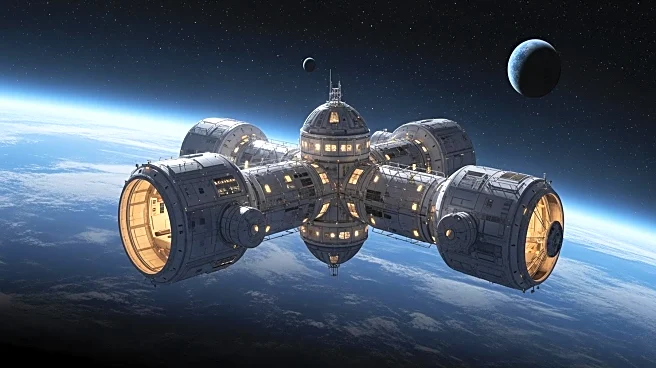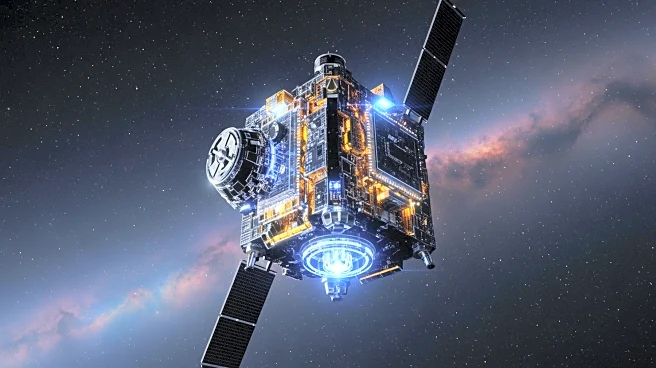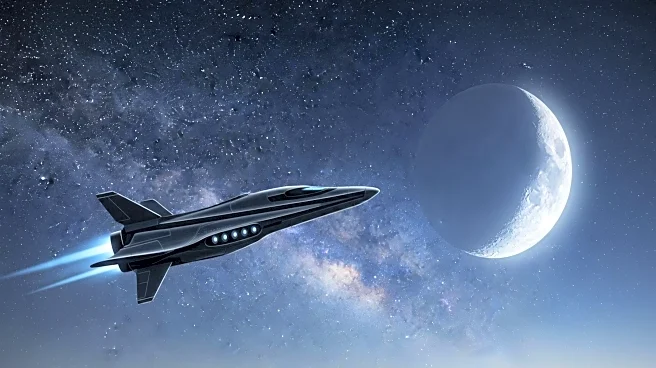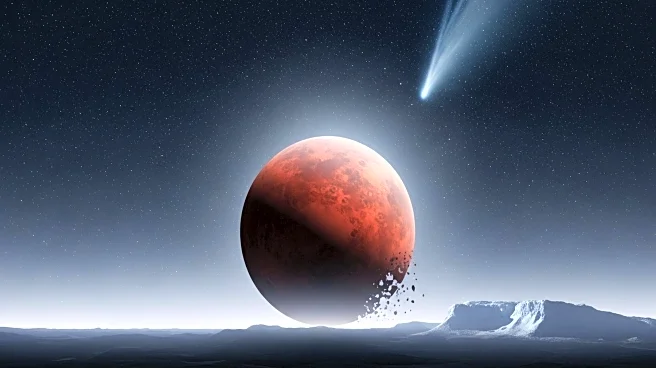What's Happening?
A collaborative study by NASA and Penn State University has proposed that biomolecules from ancient microbes could potentially survive in Martian ice for tens of millions of years. This finding is based
on laboratory experiments that simulated Martian conditions, where E. coli bacteria were frozen in pure water ice and a mixture of water and Martian soil components. The samples were subjected to radiation levels equivalent to what they would experience over 20 million years on Mars. The study found that amino acids, the building blocks of proteins, survived significantly better in pure ice than in ice mixed with sediment. This suggests that pure ice or ice-dominated regions on Mars are ideal locations to search for recent biological material.
Why It's Important?
The study's findings have significant implications for future Mars missions, as they suggest that traces of ancient life could be preserved in Martian ice. This could guide the selection of landing sites and the design of tools for future missions aimed at discovering signs of life on Mars. The preservation of biomolecules in ice could provide insights into the planet's past habitability and the potential for life beyond Earth. The research also highlights the importance of targeting pure ice regions, which could contain well-preserved biological material, offering a clearer picture of Mars' biological history.
What's Next?
Future Mars missions may focus on exploring pure ice regions to search for preserved biomolecules. This could involve developing advanced drilling tools capable of reaching subsurface ice deposits, which are believed to be less than two million years old. The findings could also influence the planning and execution of missions to other icy bodies in the solar system, such as Europa and Enceladus, where similar preservation conditions might exist. The study underscores the need for continued research and technological advancements to enhance the search for extraterrestrial life.
